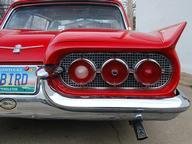Quiz Answer Key and Fun Facts
1. An extremely influential singer, Bob Dylan, originally from Minnesota wrote songs which reflected a growing sense among many that the world was becoming radically different. One of his most famous songs reflected this sense of impermanence, saying "The answer, my friend, is blowing in the_____."
2. What is the first name of the famous American philosophy professor, writer, scholar who made popular the phrase "Turn On, Tune In, Drop out?"
3. San Francisco, California became very important during the 60's in part because of its many artists and its physical beauty. It had as well the famous Haight Ashbury district through which tourists were taken in buses, with guided tours of the "hippies" in the streets. One particular time was called "The __ of Love."
4. In San Francisco as well, there were regular concerts featuring groups such as Big Brother and the Holding Company, the Grateful Dead and many others. These were held in a huge auditorium on Fillmore Street organized by the famous person named____.
5. Which of the following was NOT a famous novel first published in the 1960's?
6. There was a lot of student protest across the United States during the 1960's. In the beginning, many of the protests were intimately linked to Civil Rights. Later, they became more allied to anti-Vietnam war protests. Some youthful energy died down as the decade went on, especially with the growth of the Black Panther Movement and the appearance of the Weather Underground. What was the name of a famous student movement in the mid-sixties which originated because of First Amendment to the American Constitution issues?
7. What was the title of Dr. Martin King's speech, delivered in Washington D.C.
8. Many famous Americans were killed during the 1960s: John F. Kennedy, Bobby Kennedy, Dr. Martin Luther King, Jr, Lee Harvey Oswald and Malcolm X. Which of these four was also murdered during this period?
9. In the 1960s in the U.S.A., with the development of the space age, the Peace Corps and the Vietnam War, many people became concerned with global and international issues. This period became a time to develop ecology and a concern for the post-nuclear environment. Which is the writer whose focus squarely concerns the natural environment?
10. John F. Kennedy had a vision that people were on the edge of something important. For that reason, he formed the Peace Corps in which students volunteered to go world wide to participate in and help other cultures. What is the name he proposed for his new plan, for his vision?
Source: Author
Windswept
This quiz was reviewed by FunTrivia editor
bloomsby before going online.
Any errors found in FunTrivia content are routinely corrected through our feedback system.

